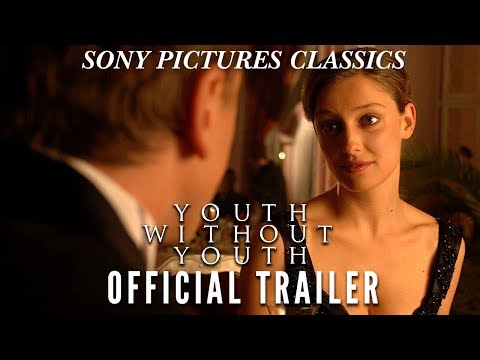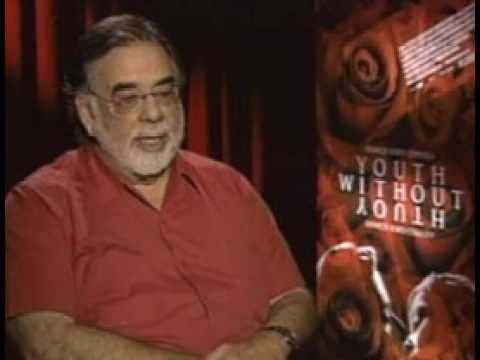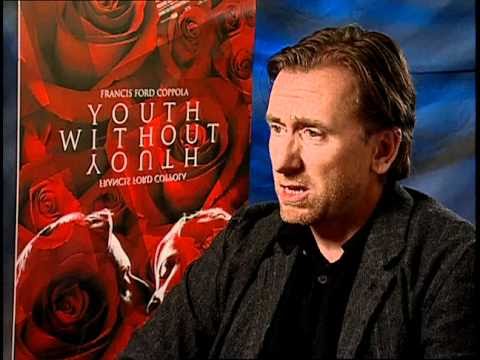Following Francis Ford Coppola’s highly touted “Megalopolis” premiering at this year’s Cannes Film Festival, I’d like to draw attention to my favorite Coppola film and one of his strangest works.
“Youth Without Youth” (2007) is an independently made “art movie” that marked his return to filmmaking after taking a decade-long sabbatical.

Tim Roth stars as Dominic Matei, an elderly professor who is nearing the end of his life. While living in Europe during World War II and struggling to maintain his studies and stature with his staff and students, Matei finds a bizarre redemption in the form of a lightning strike burning him severely.
Once the head-to-toe bandages come off, Matei’s doctor (Bruno Ganz) is stunned to discover that Matei’s body has not only healed but has transformed into a young man.
This surprising development, which is never explained, inspires Matei to go into hiding. The Nazis are searching for scientific anomalies like him.
What is Matei’s drive after finding his youth has returned to him? To finish his life’s study of human language and to reconnect, in a way both spiritual and physical, with the lost love of his life (Alexandra Maria Lara).
Get ready for #Megalopolis with Francis Ford Coppola’s ‘Youth Without Youth,’ now on @criterionchannl.
See more streaming picks of the week: https://t.co/BhAt1M2dK6 pic.twitter.com/RgppxFPONH
— The Film Stage
(@TheFilmStage) February 12, 2024
“Youth Without Youth” is one of Coppola’s greatest achievements, a deeply personal statement about how it feels to be an old man with the mind of a much younger soul. It is an exploration of how we make plans to be completed over the course of our lives but rarely finish them.
What if, after so many accomplishments, so many friends and family who have passed and the end undoubtedly near, we had a chance to do it all over again? Would we simply live a whole new life or spend time completing the “life’s work” that eluded us the first time?
Where it all leads in the end reminded me of Dickens’ “A Christmas Carol,” though without Ebenezer Scrooge’s redemption and an ending that is harsher and more honest.
There’s an emotional frankness, a casual attitude towards the mystical and a sad beauty in the storytelling that reminds me of another of my favorite Coppola films, “The Rain People” (1969).
When some filmmakers direct “personal films,” they usually make something off-genre for them; Coppola makes personal films that are an adjustment to witness. He’s showing us something from his subconscious, something from his life that is deeply revealing.

After the eager anticipation of “Youth Without Youth” was met with a collective shrug, Coppola followed it up with the equally personal, risk taking, strange and sometimes wonderful “Tetro” (2009) and “Twixt” (2011).
There are autobiographical elements in “Youth,” as well as in the intriguing “Tetro” and the wonky but hypnotic “Twixt.”
Now, with the upcoming release of “Megalopolis,” his decades in the planning passion project, the 85-year-old maestro is creating films that will likely challenge those who aren’t familiar with the overall themes and character studies of his work.
For all the theatrical verve and richly imagined action within his films, Coppola’s movies are all character and idea-driven, as well as remorseful and reflective on the past.
FAST FACT: Coppola told the Director’s Guild of America how he approached the film in ways that mirror its content. “I feel as though I’ve made a deliberate choice to reapproach filmmaking with the same attitudes and ignorance that I had as a young person. Obviously, I’m not a kid, but we all have a kid in us and I approached this movie with the willingness to do whatever came into my mind.”
I love Michael Corleone and Col. Kurtz as much as any cinephile, but seeing what Coppola’s dreams look like and watching him work them out in films that resemble an explanation of a lucid memory is a gift. There are moments in “Youth Without Youth” that remind me of the best of Wim Wenders, Akira Kurosawa and David Fincher.
Trying to decipher the exact meaning of everything here is beside the point – ask yourself how it makes you feel, as much as why Coppola wants to explore the origin of human communication in a film that already functions as an awe-inducing, erotic and sensual time-travel fable.

Some critics deemed the film a mess in 2007, but everything here has a deliberate precision. In fact, “Youth Without Youth” has the same adventurous spirit as David Lynch’s “Inland Empire” (2006), which I saw in theaters at almost the same time.
We need more dreamers making movies.
I’ve taught film classes at the college level for years and wonder if I haven’t already become like Roth’s character – did I peak a decade ago, when my passion for my work was especially obvious, when my students were closer to my age, everything felt new and it seemed I would never stop doing what I love to do?
“Youth Without Youth” appears to be Coppola’s response to whether a man his age can and/or should create art.
The answer, of course, is hell yes.
The post How ‘Youth Without Youth’ Led Coppola to ‘Megalopolis’ appeared first on Hollywood in Toto.
from Movies - Hollywood in Toto https://ift.tt/frCdqDX

0 Comments: